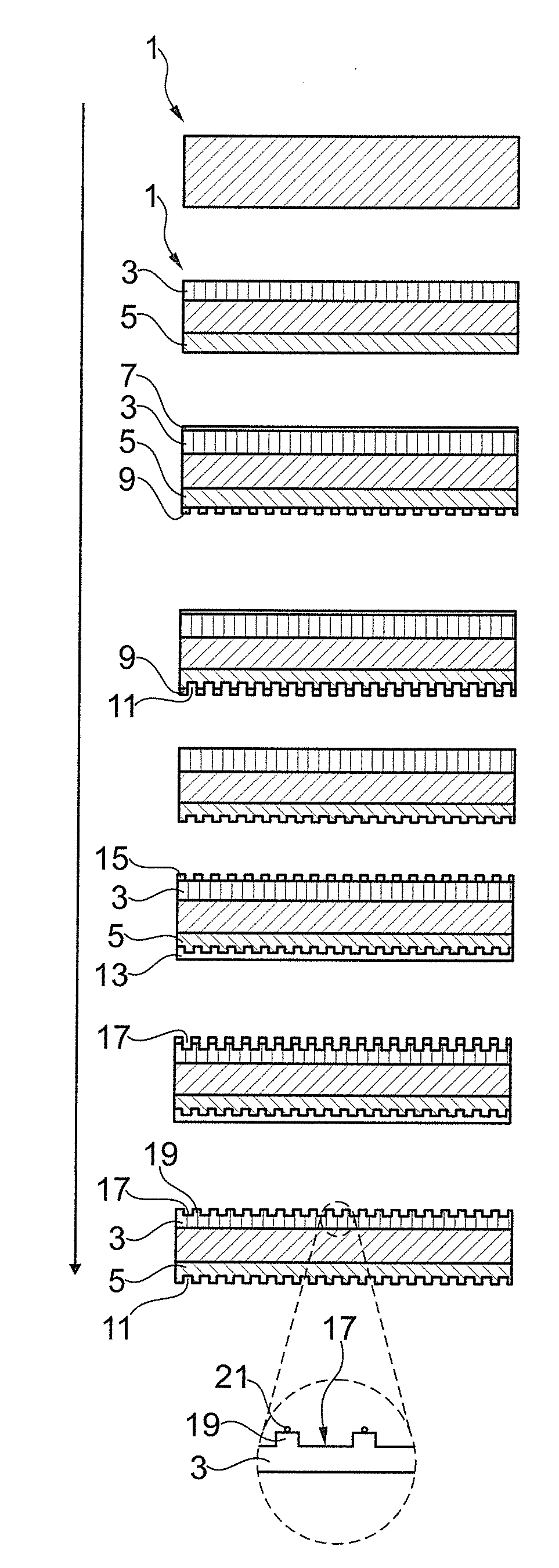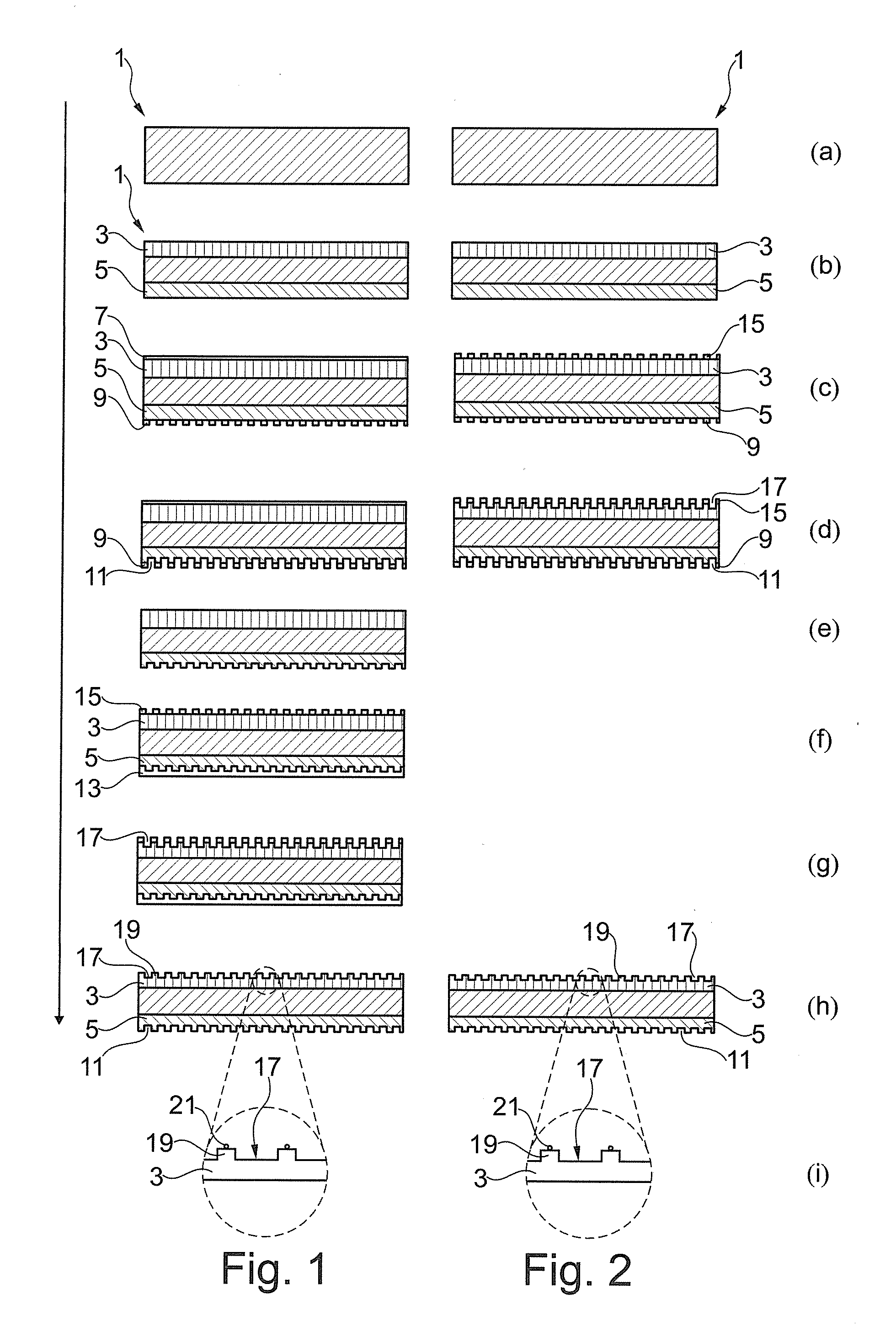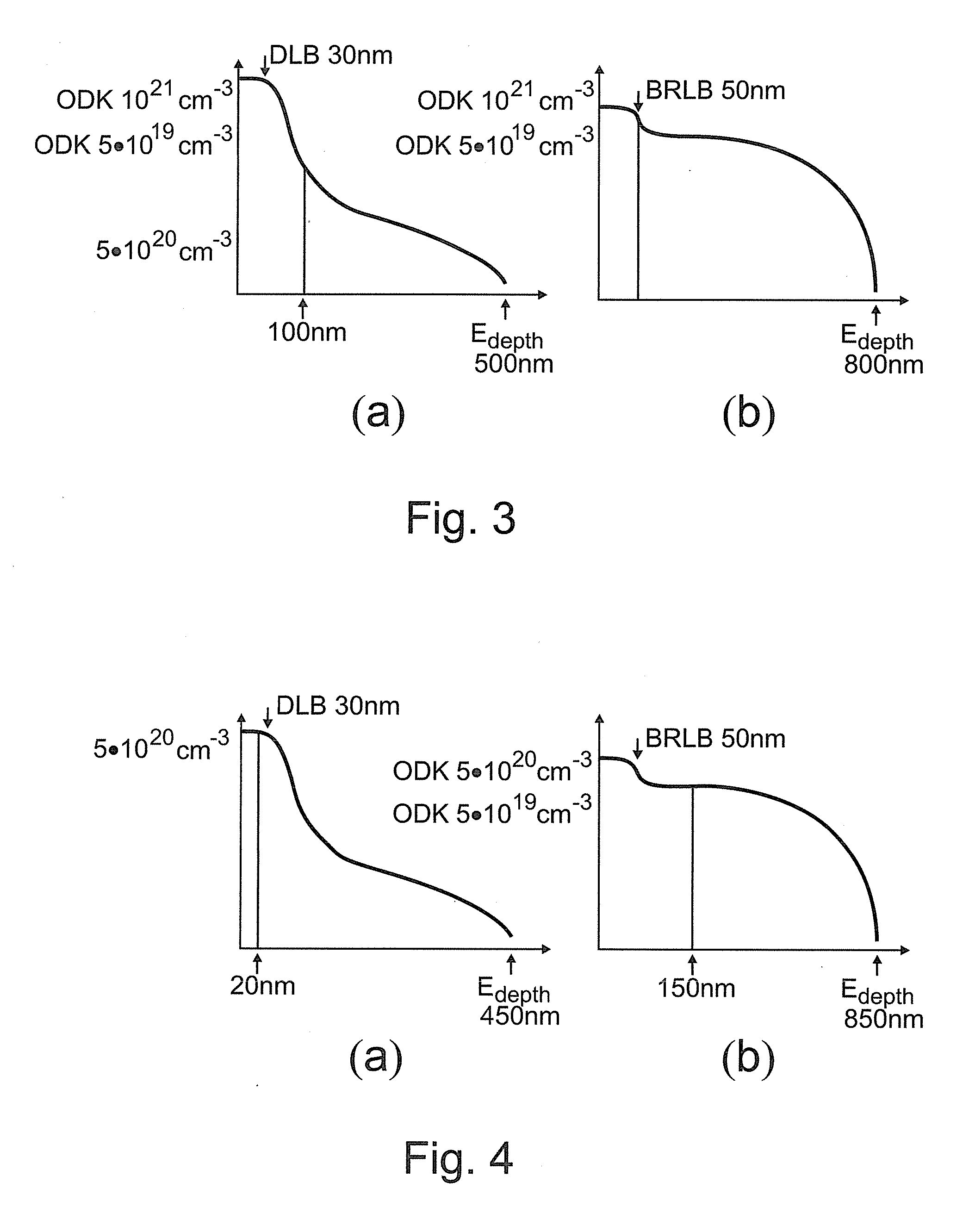Method for producing solar cells having simultaneously etched-back doped regions
a technology of solar cells and etching regions, which is applied in the direction of photovoltaic energy generation, sustainable manufacturing/processing, electrical apparatus, etc., can solve the problems of large work and material expenditure in order to etch-back the various, and the doping profiles resulting from the processing may not be optimally configured for their intended use in the solar cell, so as to reduce the amount of work, material and/or time.
- Summary
- Abstract
- Description
- Claims
- Application Information
AI Technical Summary
Benefits of technology
Problems solved by technology
Method used
Image
Examples
Embodiment Construction
[0053]FIGS. 1 and 2 show sequences of a method for producing a solar cell as have conventionally been used and as are proposed according to embodiments of the present invention, respectively.
[0054]In the case of the conventional production method shown in FIG. 1, a semiconductor substrate 1, for example in the form of a silicon wafer, is first provided (step (a)).
[0055]A plurality of different doped regions 3, 5 are then formed adjacent to a surface of the semiconductor substrate 1. For example, the semiconductor substrate 1 can have a base doping concentration, determined by boron dopants, in the range of from 1015 to 1017 cm−3. In this p-type semiconductor substrate, an n-type emitter-like doped region 3 is produced on the front side by the diffusion of phosphorus. On the back side of the semiconductor substrate 1, a p-type BSF-like doped region 5 is produced by additional diffusion of boron (step (b)).
[0056]Both the emitter-like doped region 3 and the BSF-like doped region 5 are ...
PUM
 Login to View More
Login to View More Abstract
Description
Claims
Application Information
 Login to View More
Login to View More - R&D
- Intellectual Property
- Life Sciences
- Materials
- Tech Scout
- Unparalleled Data Quality
- Higher Quality Content
- 60% Fewer Hallucinations
Browse by: Latest US Patents, China's latest patents, Technical Efficacy Thesaurus, Application Domain, Technology Topic, Popular Technical Reports.
© 2025 PatSnap. All rights reserved.Legal|Privacy policy|Modern Slavery Act Transparency Statement|Sitemap|About US| Contact US: help@patsnap.com



